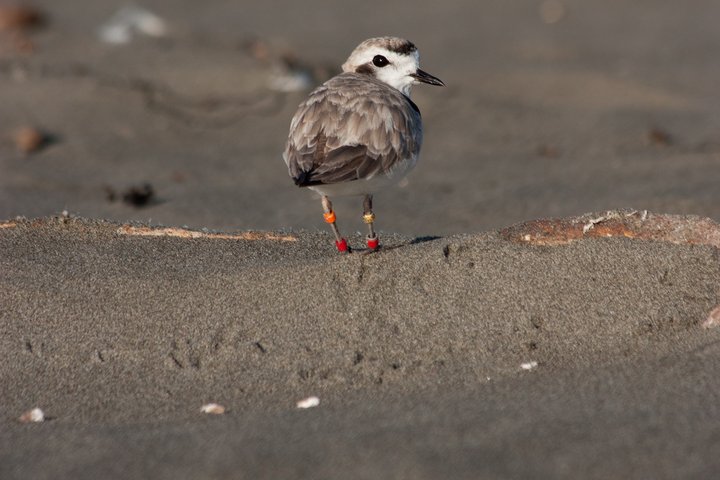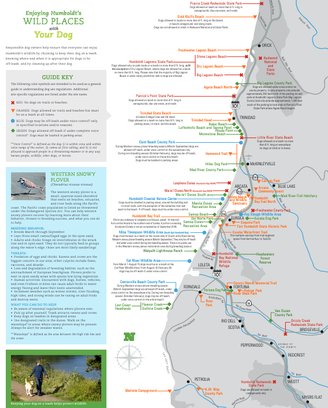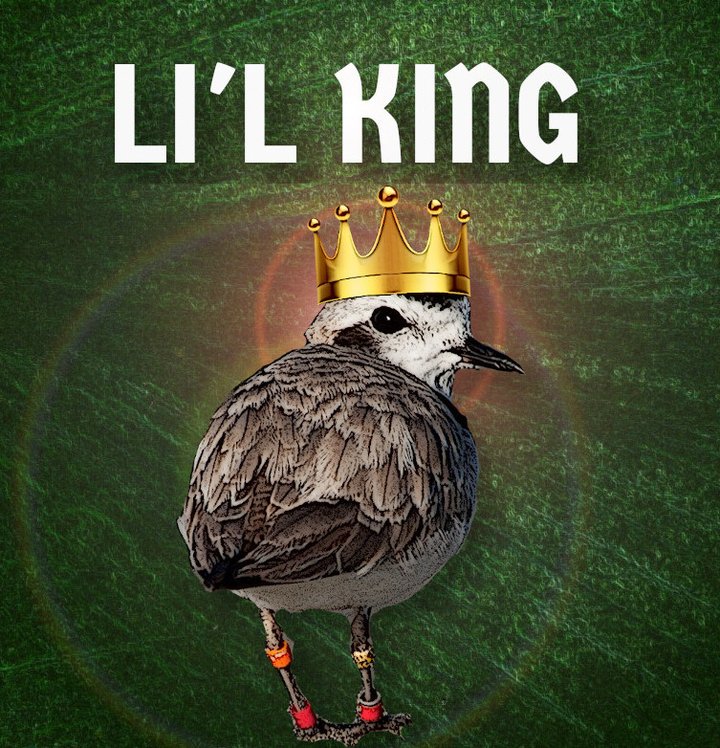
Orange-Red, Yellow Red aka “Old Man” — the oldest western snowy plover in recorded history | Photo by Luke Eberhart Phillips
###
The oldest western snowy plover in recorded history, known by many as “Old Man,” will soon be turning 20 — not an easy feat for this small shorebird — and Friends of the Dunes invites you to celebrate with them by submitting your artistic representations of this famous local plover.
Suzie Fortner, programs and operations director for Friends of the Dunes, told the Outpost that Old Man — whose actual name is Orange-Red, Yellow-Red, for the color of his bracelets used by scientists to identify each plover — was born right here in Humboldt County, near Table Bluff. Orange-Red, Yellow-Red was tagged and recorded on the day he was born: June 26, 2001.
“It’s really exciting when [plovers] make it through their first year,” Fortner told the Outpost, adding that the western snowy plover is considered a threatened species by the Environmental Species Act (ESA).
For a decade, Fortner has been coordinating the Share the Beach program, an effort to educate the public on the western snowy plover’s breeding and nesting grounds on our local beaches. You’ve likely seen areas of Big Lagoon or Clam Beach — two popular plover nesting sites — roped off and signs posted, telling you not to disturb the plovers. Because these shorebirds nest on open beaches, they are extremely vulnerable to both predators and the elements. Many plover eggs never even have a chance to hatch because they are eaten by predators, particularly ravens or crows, Fortner said.
Humans also play a big role in impacting the plover’s habitat. For one thing, crows and ravens are “opportunistic birds” Fortner said, and are drawn to places where there is a lot of human activity. When you have your picnic on the beach, food and trash will likely attract these predators. People driving on the beach also impacts the plovers, Fortner said, adding that off-roading in non-permitted areas has been a big problem in recent years.

A map showing Humboldt beach areas where dogs are and arent’t allowed, from the FOTD website | Follow this link for larger image
Another way people can affect the plover nesting grounds is by letting their dogs run off-leash, Fortner added. While there are some areas where dogs are permitted to be off-leash, there are many areas where it is not allowed, or dogs are not allowed at all, because they can potentially disturb the wildlife. Fortner said that even if your dog does not chase birds, it can run near plovers’ nests and scare the adults away. This then leaves the nest exposed and the eggs may either be covered by sand or eaten by predators.
All of these factors contribute to the high rate of “nest failure” in western snowy plovers, Fortner said, making them a threatened species. Currently there are only about 74 nesting adults across Humboldt, Del Norte and Mendocino counties.
This is why “Old Man” is so special! Not only is he part of small group of local plovers, he has also defied the odds to live to the (nearly) ripe old age of 20. Most plovers, if they make it past that first year, live up to about 10 years, Fortner said.
So help celebrate Orange-Red, Yellow-Red aka Old Man’s birthday by submitting your artistic depiction of him to the Snowy Plover Art Contest. And if commemorating this adorable bird is not enough of an incentive for you, there will also be prizes for the winners, we are told. Submissions are due by June 21. You can find full details on the Friends of the Dunes website.
It also seems important to note that plover nesting season is currently underway (March 15 through September 15), so right now is the time to be especially mindful when you’re at the beach! “Clean up after yourself, stay in designated areas with off road vehicles and pay attention to where you can and can’t have your dog off-leash,” Fortner said.

To help inspire you, here is an artistic rendering of Orange-Red, Yellow-Red by Hank Sims
CLICK TO MANAGE